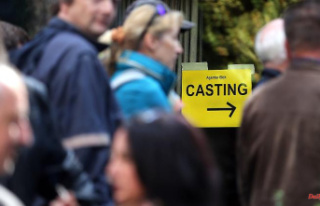A sandstone relief from the 13th century on the town church in Wittenberg has already occupied several courts: it shows a sow with two Jews suckling its teats. But while it is unequivocally anti-Semitic, it does not need to be removed. The Federal Court of Justice decides that. The reason is an explanatory board.
According to a decision by the Federal Court of Justice (BGH), a sandstone relief called "Judensau" may remain on the facade of the town church in Wittenberg in Saxony-Anhalt. In their verdict in Karlsruhe, the highest civil judges in Germany found that the church community had converted the "shame" into a "memorial" with a floor plate and a display with explanatory text.
Until the base plate and stand were added in the 1980s, the illustration from the 13th century had "a massively defamatory statement about the Jewish people and their religion" and expressed anti-Semitism and hatred, it said.
The relief shows a sow whose teats are being suckled by two people who are supposed to be identified as Jews by their pointed hats. According to the BGH, a figure considered a rabbi lifts the animal's tail and looks into the anus. In the Jewish faith, pigs are considered unclean.
A Jewish plaintiff wanted the anti-Jewish depiction removed. He also failed in the lower courts. The case is explosive because the Wittenberg town church is considered the mother church of the Reformation. Martin Luther (1483-1546) once preached here.












